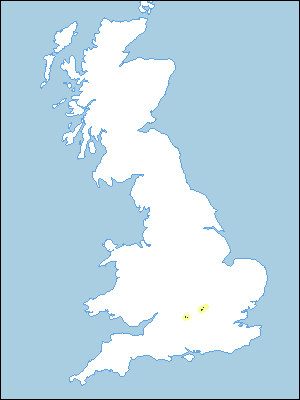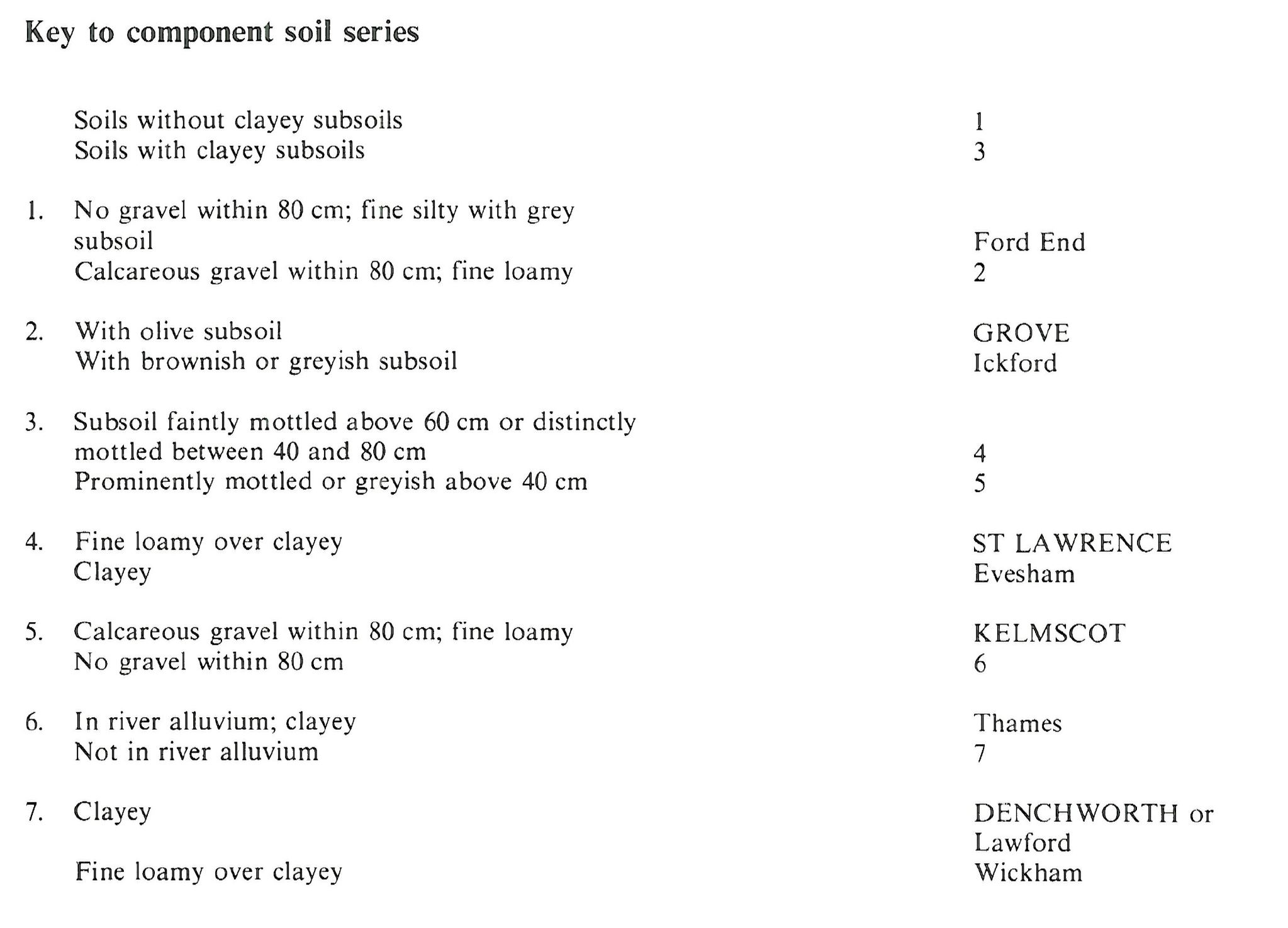
Soil Associations
0512d GROVE
Soil and site characteristics
Moderately permeable fine loamy calcareous soils over chalky gravel affected by groundwater. Some fine loamy over clayey soils with slowly permeable subsoil and slight seasonal waterlogging. Some slowly permeable seasonally waterlogged clayey soils.
Geology
Chalky drift
Cropping and Land Use
Winter cereals, some dairying.
Component soil series
| Subgroup | Series name | Percentage | WRB 2006 link |
|---|---|---|---|
| 5.12 | GROVE | 35% | Calcaric Endogleyic Endoskeletic Cambisols |
| 5.13 | ST LAWRENCE | 20% | Ruptic Calcaric Endostagnic Cambisols |
| 8.32 | KELMSCOT | 20% | Endoskeletic Calcaric Mollic Gleysols |
| 7.12 | DENCHWORTH | 10% | Eutric Vertic Stagnosols |
Covers 47 km2 in England and Wales
Soilscapes Classification
| 5 |
Freely draining lime-rich loamy soils |
0512d GROVE
Detailed Description
Soils in this association occur on level or gently sloping low river terraces in the Vale of the White Horse, Oxfordshire and the Vale of Aylesbury in Buckinghamshire and Hertfordshire. The river terraces are covered by poorly-sorted calcareous gravelly drift of variable thickness containing angular flint and waterworn chalk fragments. In Hertfordshire, the drift is derived from the nearby Chilterns escarpment and has been much disturbed by cryoturbation. Soils developed in thinner drift over Gault Clay occur on valley sides and there are narrow belts of less stony, chalky drift on the valley floors. Grove soils, grey and olive gleyic brown calcareous earths, and Kelmscot series, calcaro-cambic gley soils, are both developed in fine loamy drift over gravel. St Lawrence soils, stagnogleyic brown calcareous earths, are developed where the gravelly drift thins over clay. Denchworth series, pelo-stagnogley soils, and Evesham series, occur where the drift is absent on valley sides and ridges. Wickham and Lawford soils are found locally. On the valley floors there are very calcareous loamy Ford End soils. Some Ickford soils also occur.
In the Vale of the White Horse, Grove soils are dominant. St Lawrence, Wickham and Lawford series, mapped together as the former Rowsham series, occur near the margins of terraces. Kelmscot soils are rare. Thames soils are present with Ford End soils on valley floors and Denchworth or Evesham series are found on valley sides. Grove and Kelmscot soils are equally widespread on flat terraces in the Vale of Aylesbury, where they were formerly called the Weston Turville series; some Ickford soils also occur. Valley sides have Evesham, formerly Wicken, series and Denchworth soils are present on ridges. Broad areas of low ground mapped as Challow complex are mainly Lawford or Wickham series as now defined.
Soil Water Regime
Grove and Kelmscot soils, widespread on flat terraces in the Vale of Aylesbury where they were formerly called the Weston Turville series by Avery (1964), are affected by fluctuating groundwater and are seasonally waterlogged (Wetness Class III). But where outfalls are adequate, drainage is easily improved so the soils are well drained or are waterlogged for short periods in winter (Wetness Class I or II). St Lawrence soils are occasionally waterlogged (Wetness Class II) and Denchworth soils seasonally waterlogged (Wetness Class III). Most component soils are slightly droughty for cereals but moderately droughty for grass.
Cropping and Land Use
Where drained, Grove, St Lawrence and Kelmscot soils are moderately easy to work but topsoils are fine-textured and moisture retentive. Consequently, opportunities for cultivation and grazing are reduced in wet periods during winter and spring. Autumn ploughing is preferable. Denchworth soils are more difficult to work and autumn cultivation is essential.Winter wheat and grass are the chief crops with occasional fields of beans and winter oilseed rape. Grove soils support good pasture and in some localities there are dairying enterprises; a little permanent grassland remains in some valleys where there are undrained Ford End and Thames soils. Topsoils are slightly calcareous but can become acid under old grassland. Manganese deficiency in cereals has been recorded locally in the South East.
0512d GROVE
Distribution Map
 |
Note that the yellow shading represents a buffer to highlight the location of very small areas of the association.
Keys to component soil series
South Eastern Region
 |
All information Copyright, Cranfield University © 2025
Citation: To use information from this web resource in your work, please cite this as follows:
Cranfield University 2025. The Soils Guide. Available: www.landis.org.uk. Cranfield University, UK. Last accessed 04/04/2025
